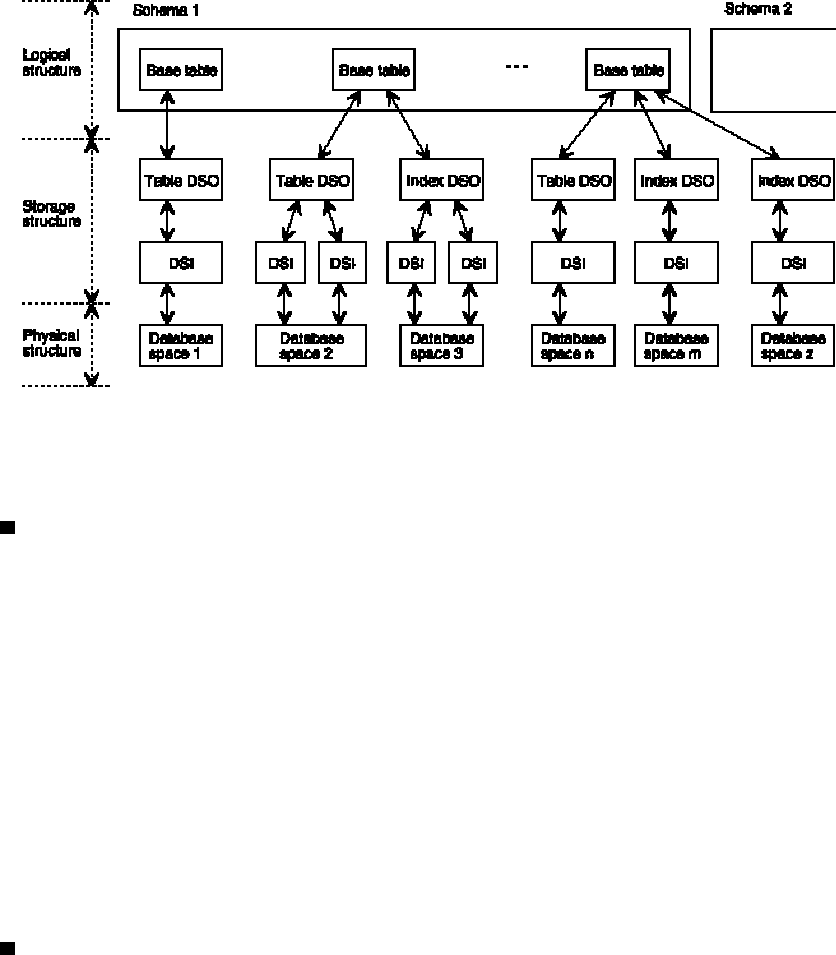
[Figure: Relationship of logical, storage, and physical structures within databases]
1.2.1 Physical structure
The physical structure consists of database spaces.
Database space
Under UNIX, a database space is defined on a raw device created on a magnetic disk; under Windows NT/2000/XP, a
database space is defined in a local file created on a magnetic disk. A SymfoWARE/RDB system enables multiple
database spaces to be defined so that the hard disk I-O load balance can be adjusted. In addition, the base table data
or index data of a single schema can be divided and stored in multiple database spaces.
In SymfoWARE/RDB, database spaces become storage structures that enable resources to be managed. Careful
consideration is given to processing efficiency, storage efficiency, and operation. The following two functions can be
used primarily:
Multi-database space:
A large-scale database can be built by allocating one table or index in multiple database spaces.
Split table operation:
When a single table is split into multiple parts based on specific rules, each subdivision unit can operate
independently. This function enables independent creation, update, backup, and recovery in parallel for each
subdivision unit of a large-scale database.
1.2.2 Logical structure
The logical structure consists of schemas and base tables, the elements of the schema.
Schema
A schema consists of table data and table definition data. The user must carefully consider the following aspects when
determining the kinds of base tables that are to form a schema. Consider the applications that are to use the database,
the contents of the data to be processed, and the data processing methods. The schema configuration is defined by
schema definition statements. These schema definition statements define the following items:
· Schema name
· Schema components
- Base table name and format
Schema definition data is entered in the RDB dictionary. Base table data is stored in a database space.
Multiple schema definitions can be entered in an RDB dictionary. In addition, base table data belonging
to a single schema can be stored in a single database space. Alternatively, base table data can be
divided in terms of individual base tables and stored in multiple database spaces.
Figure: Example of correspondence between schemas and database spaces is an example showing
multiple schemas being stored in multiple database spaces.
4


















